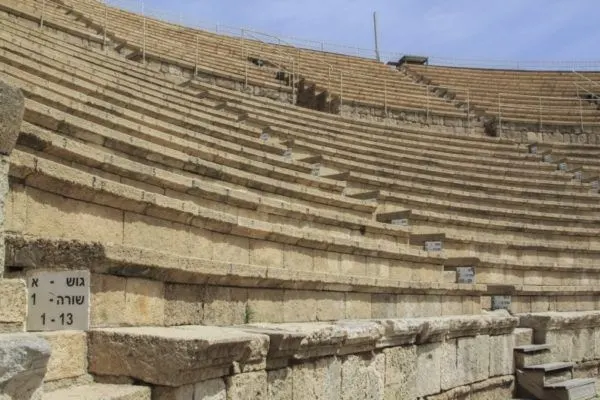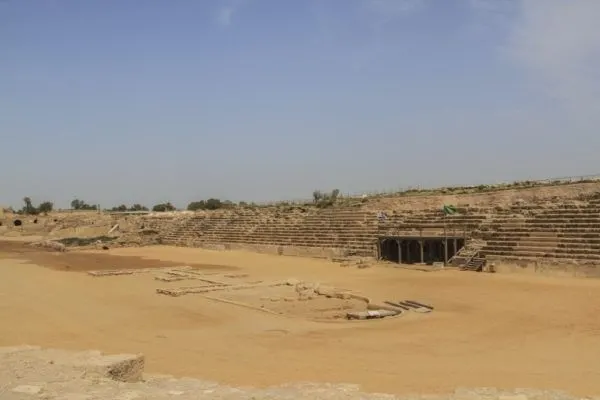A fantastic site located between Tel Aviv and Haifa, Caesarea in Israel, are Roman ruins worth the visit.
Touted as one of the most impressive Roman archaeological sites in Israel, and maybe even Asia, Caesarea is recommended on almost every website I read prior to jumping on the plane. I made a special effort, twice, to get there. I was determined, and it didn’t disappoint me.

Built originally in 586 BC by the Phoenicians, it’s been rebuilt and prosperous or conquered and destitute, off and on for the last couple of millenia. Probably it’s best times were seen during the reign of King Herod of Roman fame, and he is the one who named it Caesarea after his patron Augustus Caesar.

Herod improved on this tiny port city turning it into a profitable and progressive enterprise. As you enter the gate, one of the first edifices you see is the amphitheater which was built during Herod’s time. It held up to 4,000 spectators and was the scene of animal contests as well as gladiator battles. Personally, I was a little disappointed because it has been completely reconstructed. According to the Roman historian, Josephus, the benches were covered in vellum, a treated animal skin, and people would have brought pillows along to make it even more comfortable. (Believe me when I tell you sitting on these stone seats for a few hours is not amenable to the tush!)

Behind the amphitheater was the Promontory Palace where Herod’s opulence was on display for all of the arriving ships. In the middle of the palace was a huge swimming pool with a statue in the middle of it. Herod was fond of swimming pools as well as the obligatory public bathing houses found throughout the Roman Empire. Archaeological evidence suggests that at some point the pool could have also been used as a fish market. You can still see the foundations of the palace and there is the remnants of a mosaic floor.

Not far from the palace is a huge hippodrome where chariot races and other spectacles were observed. Built in the 2nd century AD, here troops would parade to 30,000 people who would come to see the spectacle.
Caesarea held many other sites such as a temple to Augustus, a synagogue, and aqueducts that brought fresh water to the city from Mount Carmel. However, one of the most impressive parts of the city was the harbour. In Herod’s time, up to 300 ships could be accommodated within its man-made safety, and it was built using incredible technological knowledge. It had two breakwaters, and the raw materials (volcanic ash and lime) were mixed to become a strong cement under water.

Nowadays, along with the draw of a fantastic archaeological site, the Israeli National Park system has allowed a part of the grounds to become a spot for weekenders and tourists to shop and eat. The title photo shows the old mosque, built during Byzantine times, surrounded by boutiques and eateries. I can attest that this is a very popular place with Israelis on a warm Saturday afternoon.
Author Bio: Corinne Vail is a travel photographer, food lover, and a perpetual traveler who has been travel writing for over 14 years. For many years she lived overseas in Germany, Japan, Turkey, South Korea, and the Netherlands teaching the children of the US. military. She’s visited over 90 countries, and she’s not stopping anytime soon.
